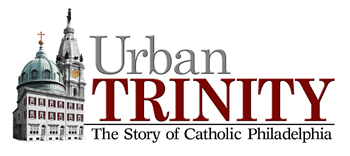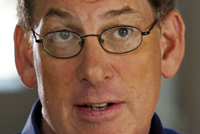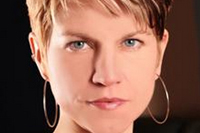 How do you compress almost 300 years of Philadelphia Catholic history into a 75-minute film?
How do you compress almost 300 years of Philadelphia Catholic history into a 75-minute film?
It’s a tall order but that’s exactly what former Philadelphia mayoral candidate Sam Katz, now the executive producer and founder of the Emmy-award winning History Making Productions has set out to do.
“Urban Trinity: The Story of Catholic Philadelphia” will be shown at the September 2015 World Meeting of Families and as three 25-minute segments on WPVI-TV Channel 6.
To make it possible Katz has teamed up with Katie Oxx, a professor of religious studies at St. Joseph’s University and a historian, who is the producer for the series.
[hotblock]
As Katz explained recently, “the serial will explore the experiences, challenges and triumphs of the diverse Catholic communities who influenced the Greater Philadelphia region over the past three centuries. ‘Urban Trinity’ will focus on Philadelphia, but will capture the arc of the Catholic story.”
That’s difficult because as Katz concedes, the major Philadelphia histories generally ignored the Catholic contribution. “They have a white Protestant perspective,” he said.
Katz, who happens to be Jewish, grew up in the city’s Wynnefield section around St. Joseph’s University. “The institution that most appealed to me was the institution where the St. Joe’s Hawks played basketball,” he said. “The kids I played basketball with all through high school went to Msgr. Bonner, St. Joe’s Prep, Cardinal O’Hara and Tommy More. I just thought I was in a Catholic city.”
The three parts of “Urban Trinity” will reflect three distinct eras of the Church in Philadelphia. The first, “Out of the Alley,” is evocative of the early days of outright hostility toward Catholicism when the first church, Old St. Joseph’s, was unobtrusively situated out of sight on Willings Alley so as not to draw attention.
The segment continues on the subsequent trustees disputes, which pitted the laity who built the churches and ran the parishes in the 18th century against the newly arrived bishops in the early 19th century who insisted upon complete ownership and control, contrary to previous local custom.
Also included are the anti-Catholic riots of the 1840s which were touched off by a dispute over Catholic opposition to their children required to read from the King James Bible in public schools. During this period St. Augustine and St. Michael churches were burned down, St. Philip Neri was attacked and a number of people were killed (actually mostly Protestant rioters).
The second section, “City of Parishes,” covers the explosive growth of Catholicism in the city, mostly fueled by European immigration and the huge number of newly created parishes both territorial and ethnic. It also covers the establishment of the Catholic school system partially as a response to the earlier riots, the foundation of Catholic colleges, the huge network of social services from cradle to grave and the influx of the many religious orders especially of women, which helped to make it all possible.
The third section, “A Seat at the Table,” begins in the early 20th century when Catholicism in Philadelphia was at its zenith under the leadership of Cardinal Dennis Dougherty, and when it probably was the most powerful institution in the city.
The segment follows through to the present when the Philadelphia Church has been challenged by flight of Catholics from the city, decreases in religious vocations and church attendance and the self-inflicted wounds of financial deficits and unaddressed internal scandals.
[hotblock2]
It also looks at the new immigration of Catholics — Hispanics and others — who “challenge and inspire Catholic Philadelphia as their predecessors had,” according to promotional material.
“The biggest thing I didn’t understand coming into this was the fact that the Catholic schools and the Catholic cocoon grew out of the anti-Catholic feelings that Protestants expressed in the 1840s and the 1850s, and how these dots connect today,” Katz said. “The church is feeling stresses today but they have been through that stuff before.”
From his point of view, “the lesson for today is that if you think about people who bring different customs, language, religion or culture as a threat to the status quo and your reaction is ‘let’s get them out of here or kill them,’ then you may be cutting off a very important part of your future.
“I see in the attitudes today something very similar to that of the Protestants in the 1840s. We have the capacity to repeat the same thing.”
Looking back to Philadelphia’s early days, Philadelphia had a shortage of priests and religious, “and we may be going back to that with fewer priests, with fewer going into seminaries and religious orders,” Katz observed. “Somehow the Catholic Church learned to educate lay people to do, short of what priests do. We may be heading back to that as well.”
His point is well taken. For most of the 19th and 20th centuries, most Catholic Church histories in Philadelphia were written by clerics from a clerical point of view that did not tell the whole story. The laity was almost as invisible in the Catholic histories just as Catholics in general were unrepresented in the general Philadelphia histories.
Katz’s choice of Katie Oxx as producer for “Urban Trinity” underscores the sweeping changes that are already taking place in the church. She is a lay woman teaching at what was once an all-male college conducted by Jesuit priests, and in this project she is drawing upon the talents of many scholars, lay and religious, who have expertise on the Church in Philadelphia.
“I’m learning just how interwoven Philadelphia culture and Philadelphia Catholic culture are,” she said. “Getting to do this project is getting to see how the two really influenced one another.”
Most of Oxx’s previous experience has been with the written word, not film or television, but Katz explained that she was chosen for the project because of her expertise on Catholic history. He already has capable staff that can assist with the technical sides of the production.
“She brings a huge network of Catholic and American historians that intersect, something a film producer would have to learn about. She brings credibility; it’s a no-brainer.”
For her part, Oxx said, “taking scholarship and translating it for such a wider audience has been an incredibly satisfying thing to do.”
While “Urban Trinity” is the centerpiece of the project, it will also include digital content — short interviews with scholars, thematic “webisodes” and education content suitable for curricula from grade school though college.
The entire project has an estimated budget of $950,000. It has received a $300,000 grant from the Connelly Foundation and additional funding through Pennsylvania tax credits. The fundraising is well over halfway toward achieving its goal, according to Katz.
***
Lou Baldwin is a freelance writer in Philadelphia.
PREVIOUS: Wish a fond farewell to Bishop Thomas at cathedral
NEXT: Advancement directors help strengthen Catholic grade schools





Looking forward to this film. Grew up in Our Lady of Mercy on Broad St. in the 1930’s.